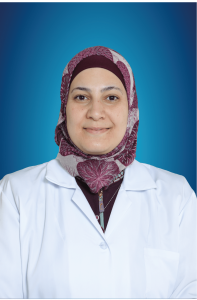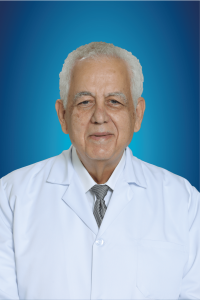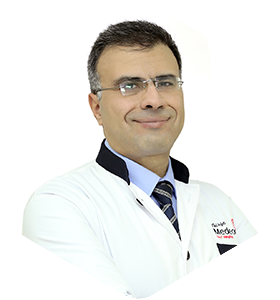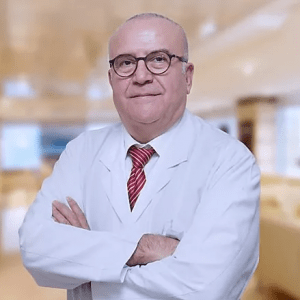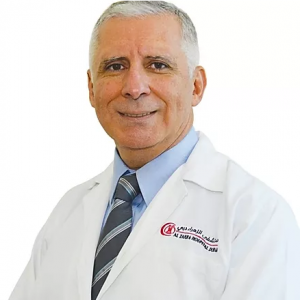Fatty Liver and PCOS: Understanding the Connection
Introduction Fatty liver is a chronic disorder characterized by fat accumulation in the liver. It is histologically similar to alcoholic liver disease but occurs in patients with little to no alcohol consumption. Damage to the liver can range widely, from simple steatosis to cirrhosis. Polycystic ovarian syndrome (PCOS) affects premenopausal women frequently. First described as… Read More
Top Doctors For Fatty Liver and PCOS: Understanding the Connection Treatments
Top Hospitals For Fatty Liver and PCOS: Understanding the Connection Treatments
Fatty Liver and PCOS: Understanding the Connection
Introduction

Fatty liver is a chronic disorder characterized by fat accumulation in the liver. It is histologically similar to alcoholic liver disease but occurs in patients with little to no alcohol consumption. Damage to the liver can range widely, from simple steatosis to cirrhosis.
Polycystic ovarian syndrome (PCOS) affects premenopausal women frequently. First described as a reproductive disorder by Stein and Leventhal in 1935, it has an incidence of 5%-18%. Recent studies have suggested a possible association between Fatty liver (Non-Alcoholic Fatty Liver Disease) and polycystic ovary syndrome.
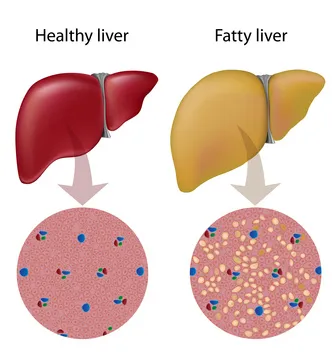
Risk Factors for Fatty Liver Disease and Polycystic Ovary Syndrome

Despite a lack of proper information on the link between fatty liver disease and PCOS, different links have been observed in the conditions which predispose to both.
Hyperandrogenaemia
This refers to an excess of androgens in women. This is a result of sustained pulses of high-frequency gonadotropin-releasing hormone (GnRH) in patients with PCOS which causes an increased amplitude of LH pulses, causing an excessive release of the luteinizing hormone (LH) and a deficiency in the follicle-stimulating hormone (FSH). In 2006, a panel of the Androgen Excess Society recommended that hyperandrogenism should be one of at least two out of three criteria for the diagnosis of PCOS.
Insulin Resistance
Over half of the women with PCOS have been reported to have insulin resistance. Burghen et al. first identified obese PCOS individuals with hyperinsulinemia in 1980. NAFLD and insulin resistance are related. Insulin Resistance (IR) is a risk factor for NAFLD in PCOS and is linked to liver fibrosis in PCOS patients, according to some clinical investigations.
Obesity
PCOS causes weight gain and obesity, which is related to the lipolytic function of androgens on adipocytes. Testosterone contributes to the release of non-esterified fatty acids from visceral adipocytes in the body and impairs adipocyte differentiation and adipokine formation, leading to the accumulation of local adipose tissue, especially in the abdomen.
Chronic Low-Grade Inflammation
Chronic low-grade inflammation in PCOS can be mediated by obesity and hyperandrogenaemia. PCOS can affect liver function by altering the levels of inflammatory factors and stress-related proteins, thus predisposing a patient to fatty liver disease.
Genetic Factors
Genetic factors have also been associated with NAFLD in PCOS. The full mechanism is yet unknown.
Symptoms of Fatty Liver Disease
Most patients with NAFLD are asymptomatic. However, signs include non-specific findings such as fatigue, malaise, abdominal (right upper quadrant) discomfort, hepatomegaly, swollen abdomen, and legs, edema, and jaundice.
Symptoms of Polycystic Ovary Syndrome
The common symptoms of PCOS include abnormalities in menstruation (irregular pattern or absence), spotting, unexplained weight gain, infertility, hirsutism, oily skin, etc.
Diagnosis of Fatty Liver Disease and Polycystic Ovary Syndrome
A complete medical history is needed to determine the possibility of PCOS and possible fatty liver. This is to help eliminate possible causes like alcoholism, toxicosis, etc.
Serum analysis of the patient may reveal abnormalities in the liver enzymes, thus pointing to fatty liver disease. Ultrasonography and computer tomography will also reveal signs such as hepatomegaly and other pointers to liver disease. The gold standard for Fatty liver disease remains a liver biopsy. This is not readily recommended due to its invasive nature.
Following a serum analysis for liver function, triglyceride, androgen, and glucose levels are also checked. Other tests may be included for the diagnosis of polycystic ovary syndrome. This includes an ultrasound and CT scan.
Management/Treatment of NAFLD in PCOS
NAFLD therapy in PCOS has no definitive approach. The main areas of interest in current research on the therapy of NAFLD in PCOS include lifestyle modification, pharmaceutical therapies, and bariatric surgery.
Lifestyle Modification
Lifestyle modification is the basic treatment for PCOS and NAFLD. This includes a combination of a diet low in sugar and high in whole foods and complex carbohydrates, along with regular aerobic exercise to achieve weight loss. Lifestyle modification can reduce weight, increase insulin sensitivity and decrease hyperandrogenaemia in women with PCOS. It is also reported to reduce the harmful effects of metabolic disorders on the liver of women with PCOS.
Pharmacological management
Although no drugs have been recommended for the treatment of NAFLD in PCOS, some drugs have been found in clinical studies to improve liver function and reduce lipid aggregation in PCOS. Some of the medications include:
- Metformin: Metformin has been used clinically in the management of type II diabetes. Metformin acts by activating AMP-activated protein kinase. Adenosine triphosphate is consumed by a synthetic route that is shut down by activated AMPK, which causes the cell to switch from an anabolic to a catabolic state and restore energy balance. As a result, fatty acid oxidation and glucose absorption are stimulated, while glucose, lipid, and protein synthesis, as well as cell growth, are hindered.
- Thiazolidinediones: Nuclear receptors called peroxisome proliferator-activated receptors (PPARs) are involved in the transcriptional control of important metabolic pathways like lipid metabolism, adipogenesis, and insulin sensitivity. They are found in the liver, adipose tissue, heart, skeletal muscle, and kidney. Thiazolidinediones have insulin-sensitizing effects and are widely used in the treatment of diabetes mellitus.
- GLP1 Receptor Agonists: Incretin peptides are intestinal hormones that promote postprandial insulin secretion in a glucose-dependent manner. They have effects on the regulation of islet hormone secretion, glucose concentration, lipid metabolism, intestinal motility, appetite, and body weight.
- Spironolactone: Spironolactone primarily has an anti-androgenic action by binding to androgen receptors, inhibiting the generation of ovarian and adrenal steroid hormones as well as 5-alpha-reductase activity, and treating PCOS.
- Nutritional Supplements: Some dietary supplements may be beneficial in the management of NAFLD in PCOS, according to recent studies. These supplements include omega-3 fatty acids, vitamin E, Vitamin D, and milk thistle.
Bariatric Surgery
These refer to operations intended to change the digestive tract. These include sleeve gastrectomy, biliopancreatic diversion with a duodenal switch, and gastric bypass surgery. Treatment for obese PCOS women who undergo bariatric surgery has been shown to be beneficial. Bariatric surgery can improve menstrual abnormalities, improve glucose metabolism, restore ovarian morphology, improve hyperandrogenaemia, and reduce body weight, and dyslipidemia in obese patients with PCOS.
What are the long-term effects of untreated fatty liver disease and PCOS?
Fatty liver disease and PCOS are serious health problems that can get worse if left untreated. Having fatty liver disease increases the risk of developing
- liver cancer,
- liver failure, and
- liver scarring.
On the other side, PCOS has been linked to
- high blood pressure,
- type 2 diabetes,
- infertility, and
- sleep apnea.
In order to manage these diseases and reduce the possibility of long-term health issues, it is imperative to seek medical guidance and follow a treatment plan.
Conclusion
There is growing evidence that PCOS can increase the prevalence of non-alcoholic fatty liver disease. Therefore, screening for NAFLD should be enhanced in patients with PCOS, especially those with insulin resistance and hyperandrogenaemia since they are at a higher risk of being affected by both conditions.
Fatty liver disease and PCOS have a complicated association. Studies have indicated that women with PCOS are more prone than women without the disorder to develop fatty liver disease. This is due to the possibility that PCOS will create insulin resistance, which will in turn, cause the liver to manufacture more fat than it can eliminate. This extra fat can build up in the liver over time and cause fatty liver disease. Similar to insulin resistance, fatty liver disease can also worsen PCOS symptoms by increasing insulin resistance. Blood sugar and weight management are crucial to prevent or treat fatty liver disease in PCOS-afflicted women.


